This nature study calendar is a beautiful math and art project that lets you follow the changes of the year, learning about the seasons and observing the natural world.
Seasonal nature study calendar
Following the seasons is the main rhythm for our family. We garden, grown some of our own food, enjoy being out in nature and celebrating all the festivals of our year. Much of the learning, art and crafts we do is tied to a certain time in the year, and if you follow me on Instagram you’ll know we head out to the forest, meadows or beach a few times a week for a nature walk – even early in the morning to catch the sunrise!
To start the new year, we’ve made a seasonal calendar which we’re using to track all the first signs of the natural year that we spot when we’re out and about: first snowdrops, first daffodils, when we pick our first homegrown salad, first signs of autumn leaf colours….
How to make an easy calendar with kids
Take a big piece of paper or card – or tape some smaller pieces of card together to make the size you want.
Then draw a big circle on your card. We used a tray as our template.
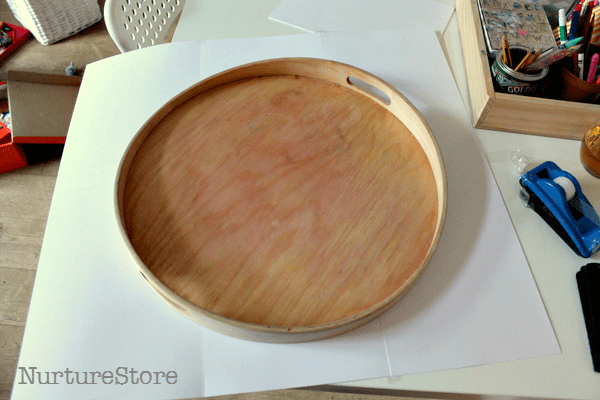
Find the centre of your circle. If you’ve drawn your circle with a pair of compasses it’s easy to find the centre. We folded our circle along its diameter in a few places, finding the centre of the circle where all the lines crossed.
Then mark out the 12 months of the year. If you want to use a protractor and a ruler, draw lines every 30 degrees around your circle. If you’re working with younger children you might prefer to simply fold your circle in half, quarters and then twelfths, creasing the folds in the paper to show where each line should be.
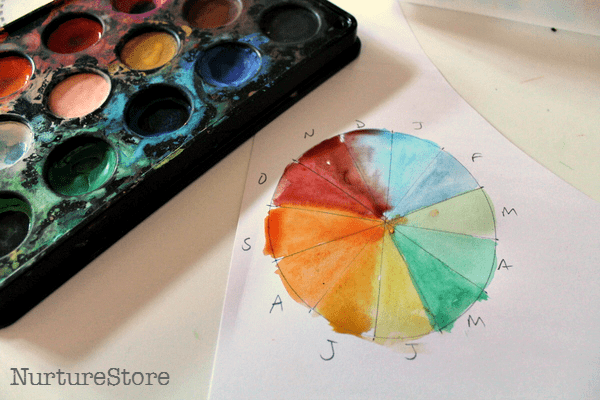
Once you have your 12 months marked out, decide which colour you want to paint each one. We sectioned out months into the four seasons and talked about what colours we associate with each – which colours and feelings would match together, what natural colours would we see at each time of year?
Then use watercolour paints to fill in your 12 month sections on your calendar. We used:
:: shades of frosty blue and grey for winter
:: shades of fresh green for spring
:: shades of yellow and orange sunshine for summer
:: shades of fall leaves for autumn
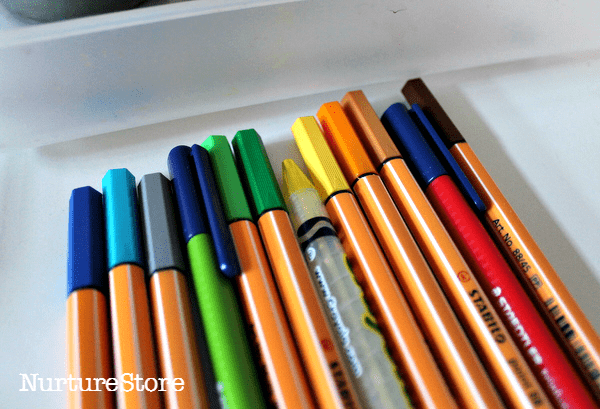
Once the paint was dry we found a selection of pens to match our colours, and used them to write in the name of each month. We also wrote in key dates along the spikes of our calendar wheel – for festivals and birthdays.
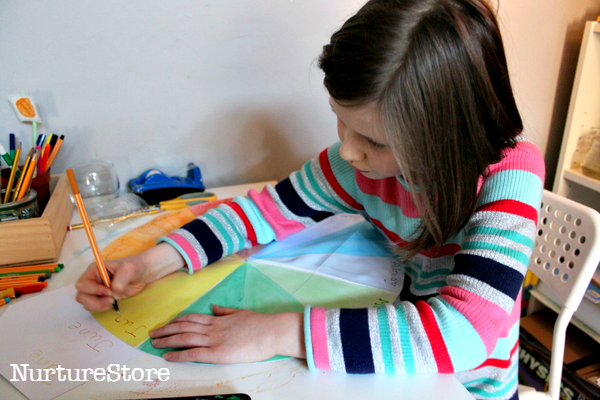
We’re putting our calendar up in the kitchen and we’ll turn and re-position it, keeping the current season at the top, as the year progresses. My children always want to know how long it is until their birthday, or which is the next festival that’s on the way, and the colourful calendar is a pretty, simple visual representation of the year – and an easy way for them to count the months.

Using the calendar for nature study
As we spot new signs of the changing year, we record them on our calendar. We make a little sketch of what we’ve seen and write on the date, and then stick it on to the matching month on the calendar. It will be interesting to track any changes from one year to the next, spotting early or late seasons through different years.
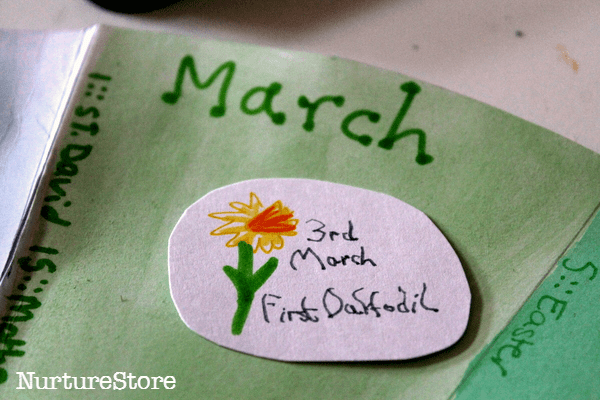
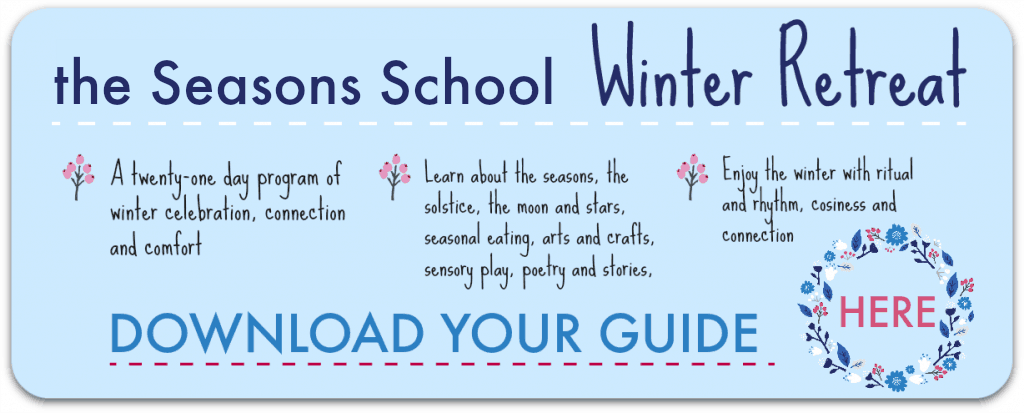
Download your 21 Day Winter Activities Countdown
Click here to get your copy of the Seasons School Winter Retreat 21 day activity program.
It's one part educational curriculum; one part seasonal celebration; one part family memory making.
:: over 70 pages of learning, activities, and printables
:: a complete twenty-one day program of nature, science, literacy, arts and crafts, sensory, and play
:: a planned idea for each day, with plenty of options for flexibility and choice
:: themed around the special words of the season, giving rhythm and ritual
:: follow as a daily countdown, or dip in and out through the winter season
:: material lists and bonus printables make it so easy for you
:: created with children aged 4 to 10 in mind



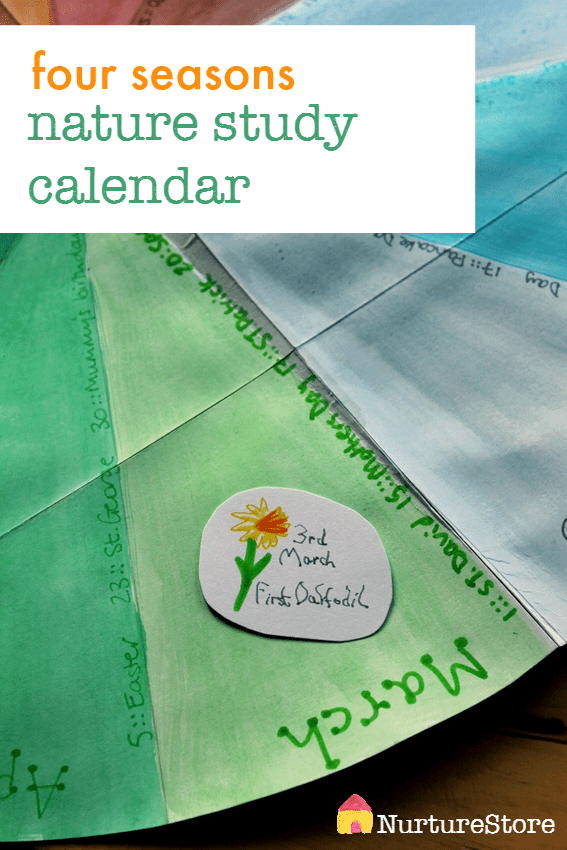

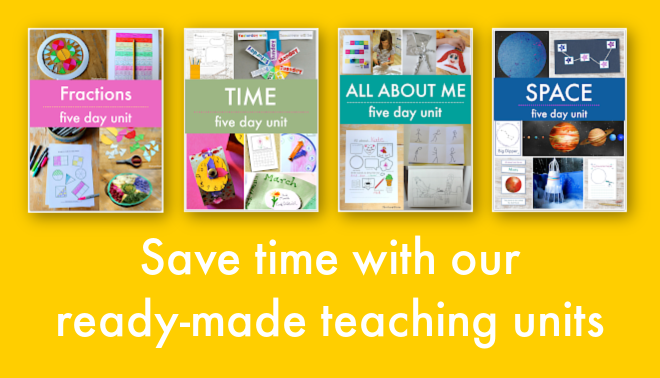
I would welcome any free information suitable for a childminder thank you x